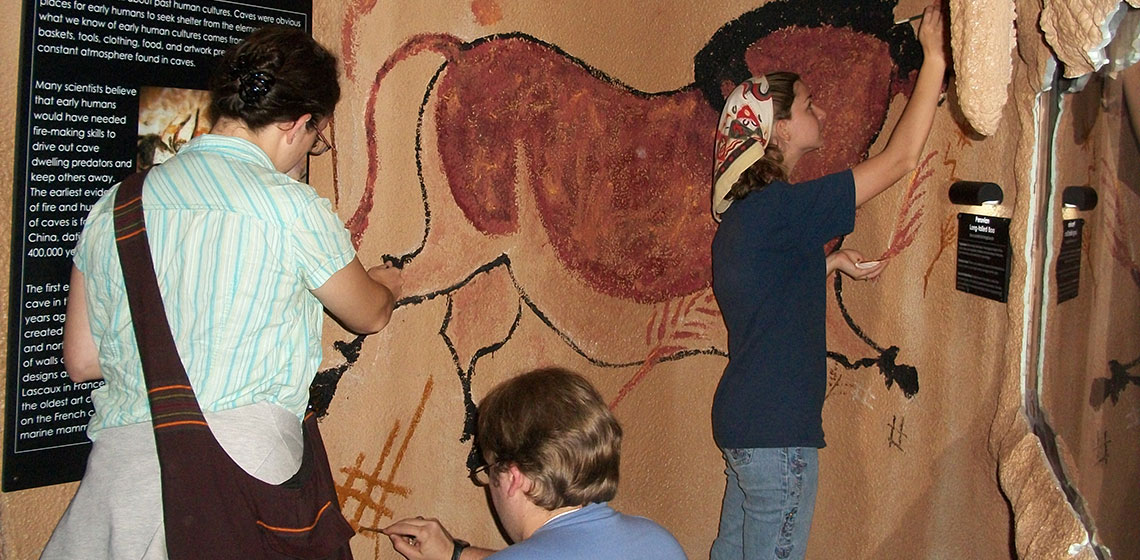
The second annual Reconstructive and Experimental Archaeology Conference was held at the Schiele Museum of Natural History, Gastonia, NC, 16-17 October, 2011 and was attended by over 50 participants representing at least 10 states, two countries and an unknown number of general museum visitors.
We were extremely fortunate to have Dr Nick Dixon serve as our Key Note speaker. Dr Dixon is the chief excavator, designer and current director of the Scottish Crannog Centre located on/in Loch Tay, Kenmore, Scotland. Dr Dixon delivered a very informative, exciting and highly entertaining description of both the on going under water archaeology efforts, descriptions of excellent preservation conditions and the resulting structural reconstruction efforts. Check out their website at www.crannog.co.uk.
The purpose of the Reconstructive and Experimental Archaeology Conference is to promote and stimulate interest in reconstructive and experimental archaeology; to support and facilitate an active and open exchange of information between all related groups; to serve as a bond among those interested in this and related subjects; to publish and to encourage publication; to advocate and to aid in the conservation and development of related data; and to encourage an appreciation, high standards, development and support for the scientific application of reconstructive and experimental archaeological research.
Several informative papers were presented.
- Carolyn Dillian (Coastal Carolina University) and Charles Bello (FEMA) explained their research approach into prehistoric pigments. A variety of pigments was used by prehistoric peoples in the eastern United States, with white, red, and black the most common. The mineral vivianite may have served as one source for blue pigment. The authors combined geology, ethnohistory, and experimental archaeology.
- Larry Kinsella explained his theory about the use of the bannerstone as a game-specific atlatl accessory.
- Sean Taylor investigated how modern development or land management practices influence artefact locations. He specifically addressed the effects timber harvesting equipment had on planted artefacts.
- Joseph Herbert and Michael Smith described experiments on pottery composition. A lot of Woodland period pottery from the South-eastern U.S. is grog-tempered ware. Methods for identifying grog are typically assumed to be effective, but experiments were needed to assess the value of such identification methods.
- Steve Watts presented a Stone Age challenge: from Flint to Fish. Starting out with only one flint nodule and one hammer stone, and using only stone age technologies, the challenge was to produce fishing gear utilizing tools made from that one nodule and raw material gathered from the local landscape. Research questions centred on the archaeologically ‘invisible’ technologies involved in Stone Age fishing and an understanding of the fish-taking techniques beyond the tools.
- Michael Miller tried out an experimental approach for identifying specific percussion tools used by the flintknapper. This way, we can expand on traditional approaches and add to our understanding of flake formation and typology.
- Jack Cresson also discussed lithic technology; not the simple, straightforward percussion and pressure techniques but grinding as a preparatory technique to finished flaking, known as ‘flake over grind’ technique or FOG.
- Maria-Louise Sidoroff, Laurie Cowell, Noor Mulder-Hymans moved with their paper all the way to Jordan. They looked into eggshell thin walled cooking pots from the Nabataean period. Results of forming experiments confirmed that the style of cooking pots under research was created by highly skilled potters, whose chaîne opératoire involved complex cognitive processes.
This year’s Poster Section included a description of Nabbian pottery replication experiments, investigations into potential early ‘brain-tan’ hide working techniques without the use of stone or metal tool technologies and a very interesting and educational poster on the value of archaeological reconstructions and associated economic development projects from Spain. Several ‘hands-on’ breakout sessions focused on prehistoric/early historic period activities such as flint knapping, dart twisting, hide working, cordage and drop spindle technologies, etc. were also offered.
The final day was opened with a round table discussion on Teaching Experimental Archaeology in the Academic Setting and was conducted by Dr Bill Schindler.
Dr Errett Callahan, originator and designer of the Cahokia House reconstruction, gave a final slide presentation documenting the history and design of the Cahokia House Reconstruction Project. The slide collection and some associated materials are now housed in the permanent collections of the Schiele museum. This year the board also instituted the Fire Keepers Award, recognizing those individuals who make a significant contribution to REARC and/or the fast growing field of reconstructive and experimental archaeology.
This year’s Fire Keeper Award was presented at the annual Ground Breakers Dinner to Dr Ann Tippit in recognition for her (and the Schiele Museums) on-going support of REARC. The Schiele Museum has again offered to host next year’s conference, which is scheduled for October 19-21, 2012. Keep an eye out for details as they develop at www.rearc.us.